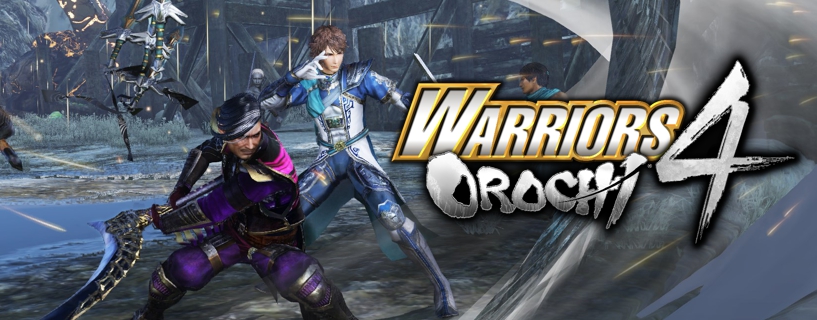Dynasty Warriors and Samurai Warriors are back for the 4th time, bringing back classic the “Warriors” gameplay along with a few changes and additions to the true and tried formula.
PS4: Released
Switch: Released
Type: Single-player, Multiplayer
Genre: RPG, Action
Developer: Koei Tecmo
Publisher: Koei Tecmo
Release date: 20 Oct, 2018


A return to the basics after Dynasty Warriors 9
It has been quite some time since the last crossover between Dynasty Warriors and Samurai Warriors, Omega Force’s marquee titles. Dynasty Warriors representing the famous “The romance of three kingdoms” and Samurai Warriors the “Sengoku”-era that started with the famous historic figure of Oda Nobunaga.
This year we finally got a real current-gen release of Warriors Orochi that keeps continuing the story.
The test machines
1. A Microsoft Surface Pro 2 with an i5-4300 with integrated graphics card and 8 GB RAM.
By putting the game to SubHD and the lowest settings it’s possible to reach a more or less playable 30fps with occasional framerate dips when a few things are on the screen.
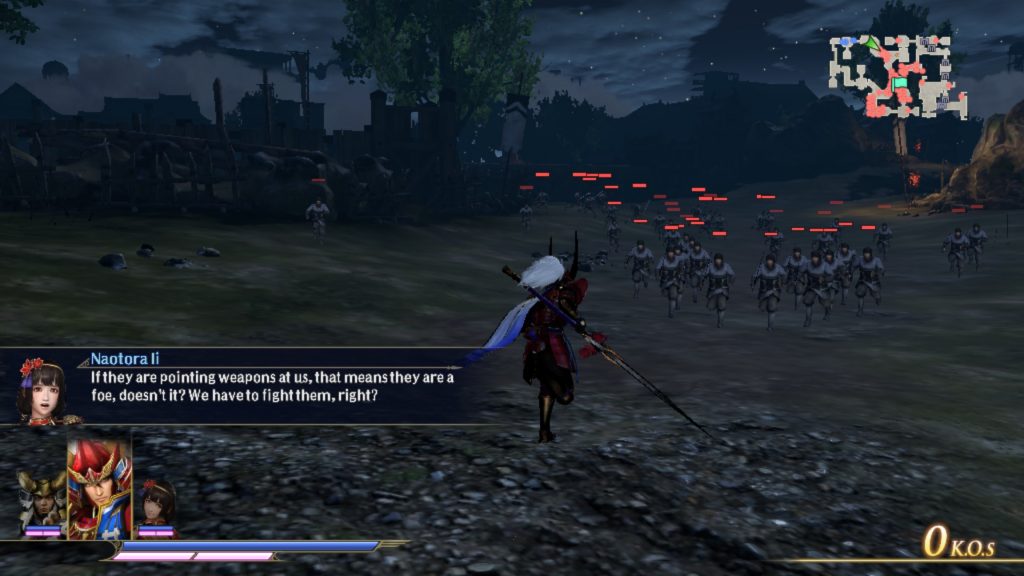
2. A PC with i7-6700, 12GB RAM and GeForce GTX 1060 3 GB
Everything at high at HD runs below 60 fps but still above 30 fps. Supposedly the performance was improved with further patches. Unfortunately, due to certain circumstances, I couldn’t test it. Impression: It seems like the game works well when scaling down, but becomes really resource hungry when increasing the fidelity.
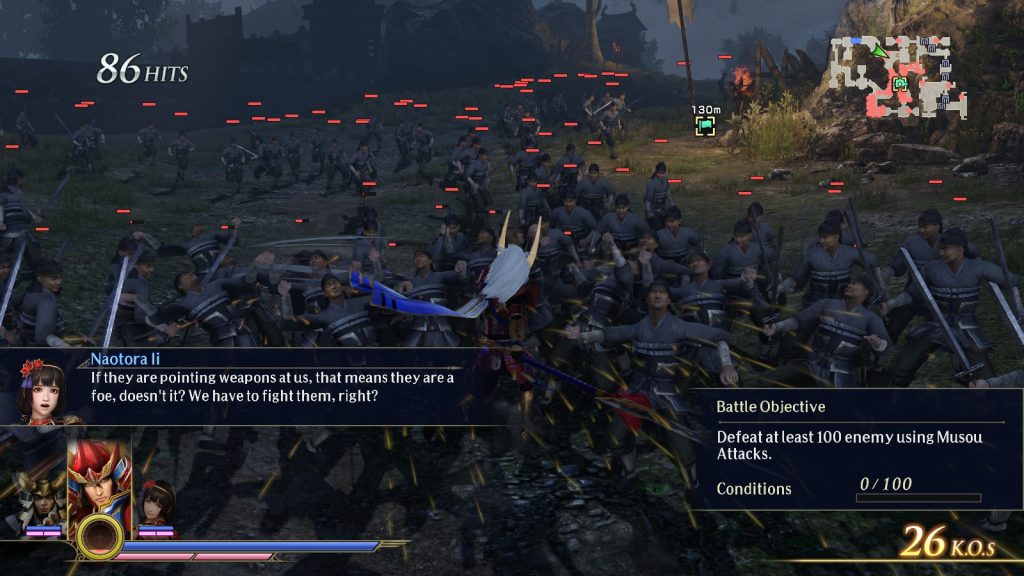
The Story
For some reason, Olympus Zeus has found interest in the prior struggles of the united front between these two mighty forces and has seemingly put them back together again for unknown reasons. As both sides are finding themselves in an unfamiliar world, a struggle immediately starts. The initial Samurai Warrior trio immediately finds themselves on a battlefield and decide to put an end to it. As they defeat opponents, more of the cast from different factions join their cause to find a way out of the current situation. Even though all of them have forgotten their prior entanglements from the predecessor games, they soon find each other familiar and start to work together.
The story is presented in fully voiced text-based talks, conversations mid-mission or in pre-rendered scenes.
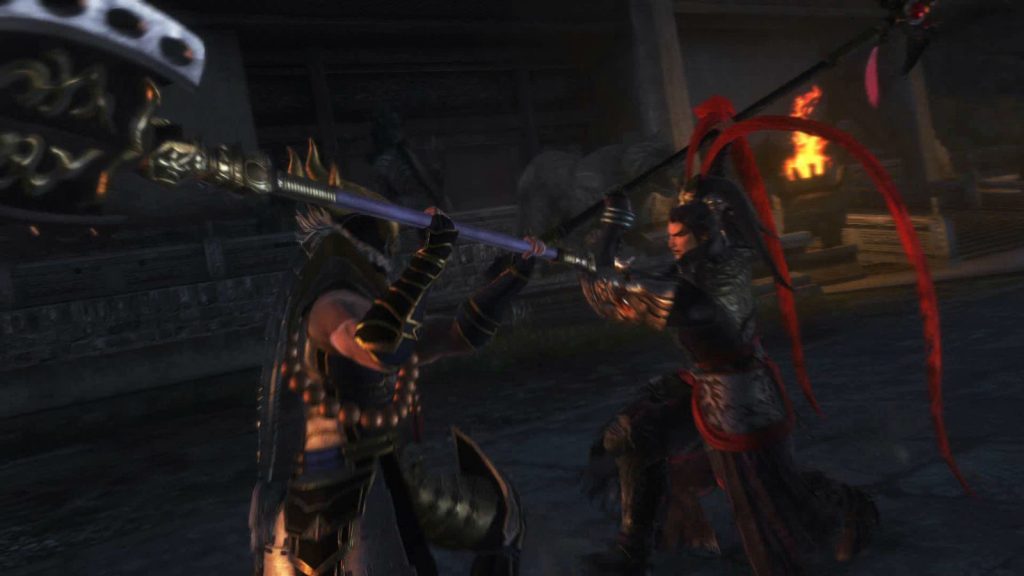
Each character also has their own relationship gauge. Once filled, you can unlock short conversations with other characters, adding some nice interaction between characters usually not possible in their respective games.
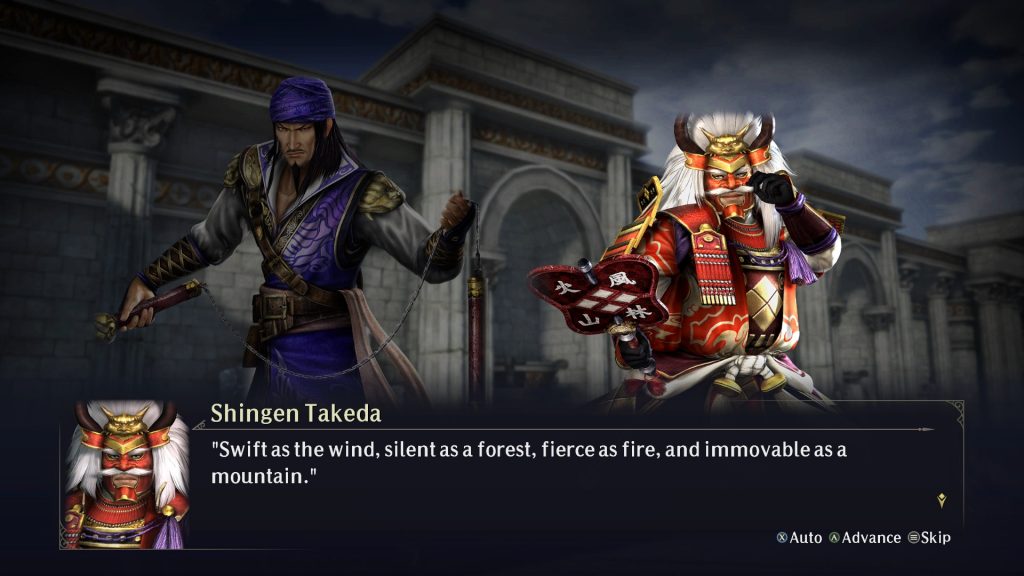
The Controls (Gamepad)
LT/RT = Character switch
L = Blocking and recovery from knockdowns
R + X/Y= Magic
R + B = Unique Magic, requires 1 Musou gauge and full magic
R + A = Summon horse
X = Light attack
Y = Hyper/Charge attack
A = Jump
B = Musou attack, requires full Musou gauge (2 bar)
R3 = Rage
Though the controls are the same for Dynasty and Samurai Warriors characters, there are slight differences between them.
Samurai Warriors:
Characters from Samurai Warriors have Hyper attacks in addition to charge attacks that are used within a combo. By starting your attack with a hyper attack your character lunges forward for an attack, it works kind of the same as with the light attacks and has sequence enders too by using the light attack. The caveat is that you get repelled when it gets blocked, leaving you vulnerable to attacks. Most Musou attacks start with small attacks first and then end in a big blow. Rage Musou are usually are just a big attack.
Dynasty Warriors:
Don’t have Hyper attacks and are limited to light attack sequences and charge attack enders. All of them have at least two moves with a second ender attack signaled by a golden glow that those special attacks are being used. A few characters also have special characteristics such as a burning sword for Sun Quan. They also have two base Musou attacks one on the ground and the second one in the air. Both are big attacks. In Rage, it becomes closer to the classic Musou. The longer you hold it the longer the attack sequence becomes and changes even with increased defeated enemies and ends in a big blow.
The Gameplay
Multiplayer
Before we get into the nitty-gritty of the gameplay, I’d like to mention that the story has both online and local co-op. The local co-op has no restrictions and is played in split-screen. Unfortunately, I saw no option for a dual screen setup to offset it.
For online co-op, I wasn’t able to test it due to not being able to find other players. But it’s known that you can’t progress together like in local co-op. One player has to unlock the missions beforehand.
There is also a brand new 3v3 competitive mode akin to taking bases. Instead of 3 characters, you’re limited to 2. It’s an entirely separate mode with a different progression system. Unfortunately, I wasn’t able to test as well because of the lack of players and was only able to play the tutorial. Here’s an introductory trailer to it though: https://youtu.be/yK7-lXZLFQA
Story Mode
This is where the real meat lies. Here you can form teams, level up your heroes and equip them with weapons and more. Along with it comes an overarching Story tying everything together.
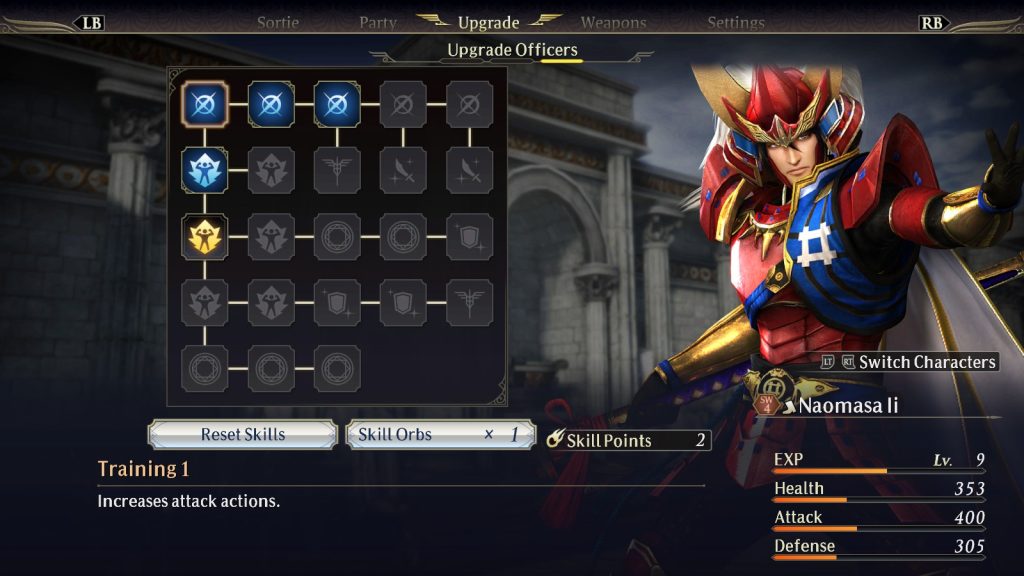
Preparing for battle
Once you are finished with your preparations you can sortie your line up. But before that, it might be a good idea to take a look at your next mission first. This is because each mission has an elite team where the characters gain more EXP, which gives you an incentive to deviate from your favorite team and try out the vast cast with benefits. By changing your team there are a lot of things to watch out for since there are quite a variety of things to prepare.
The preparation screen is split into different sub-menus, some are unlocked as you progress through the story. There you can create teams consisting of three on-the-field members and four support members that can passively increase your stats or support you with defensive attacks on hit. Weapons you got as spoils from the battle can also be equipped here.
Additionally, there are upgrade options for characters and weapons. By finishing battles you can earn Growth Points and Gems. Growth Points are exclusively used to level up characters, while the latter is used for camp upgrades, weapon customization, buying weapon attributes, etc. and sending a team to training. The camp upgrades can offer various benefits, such as stat increases or an increase of the prizes post-battle. Weapons can be dismantled to extract their attributes or sold for gems.
As a curiosity, the first upgrade for the camp is actually just a Gallery where you can read up on the story of past games, already revealed scenes, a model viewer and more.
There’s no issue if you have forgotten about a mechanic because there’s a tutorial within the settings tab where you can read up everything again.
Another nice thing is that each character has a familiarity bar and by filling them up, you can unlock interactions between characters showing a little bit more of each character’s personality.
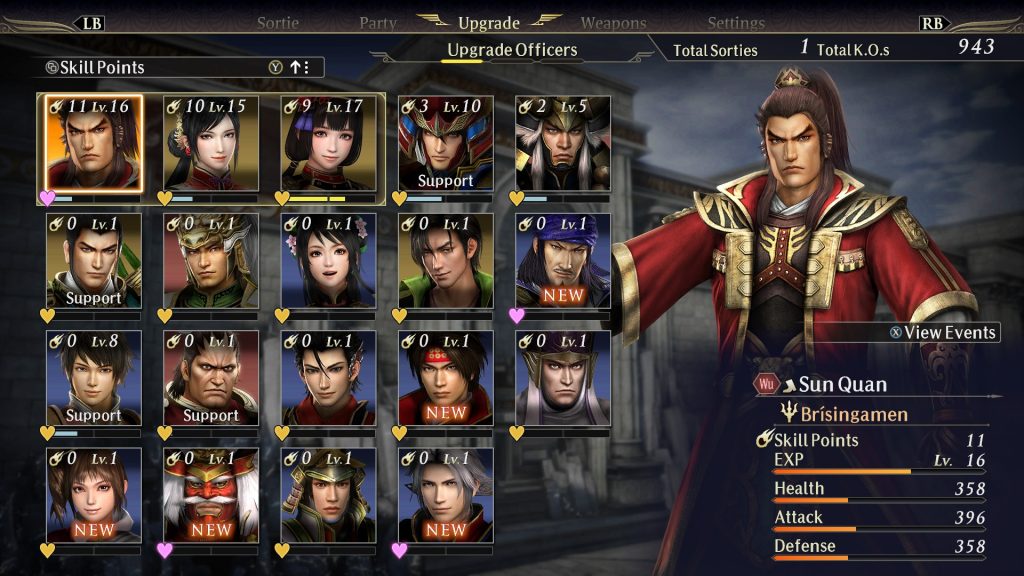
Onto the battlefield
Prep screen
In here you can see the map, both your own and the opposing forces, and the placement of the generals. Each mission has their own three extra objectives that give out good first-time rewards and can be marked here. Once you are ready, you will get to a load screen where you can choose some music for your upcoming battle.
The gameplay flow on the battlefield
The “team of three” mechanic makes its return and you’re free to switch between them as long as you’re not at the receiving end of an attack. Inactive members gradually recover life and musou. Once you’re on the field, it’s a simple matter of deciding how to approach your victory conditions and prevent the loss conditions from happening. Mostly it’s just about defeating specific enemies and keep allied units from losing.
There are 3 additional challenges that you can fulfill for extra benefits, like defeating a specific amount of enemies with magic for additional gems. They are repeatable, but there is a special first-time reward for completing the challenges. The first missions can be easy, but the further it goes the more challenging it might become. There are a variety of maps, but not every battle has an individual one. Some maps return under different settings.
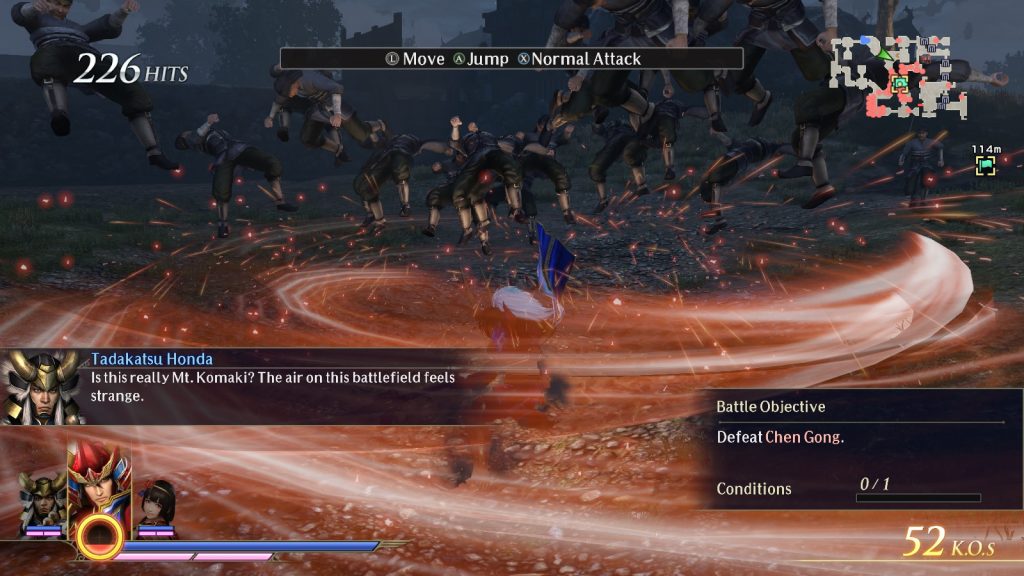
The Battlesystem
Every character has their own sequence of attacks and can be seen on the provided move-list in the menus. The most basic ones start with light attacks and end them with charge attacks. Depending on when the charge attack is applied, a different sequence ender will be used. By using character switch within a combo adds a tornado attack that helps you to continue your onslaught with the next character.
The Musou attack requires 2 Musou bars. Unleash an invincible and devastating attack at any time as long as you are standing. Series veterans will feel right at home.
Not exactly new, there is an updated system on how to get Rage. At later stages, Chaos Origin (ghost-like enemy) appear on stages and are close to impervious to physical attacks. If you kill them at a combo count of at least 300 you get a special consumable, which immediately gives you the ability to activate the Rage mode. It’s important to note that your characters Musou will completely refill on activation. Not only does your character get buffed, but you also get a new Musou attack. Once you use it, your rage will immediately run out.
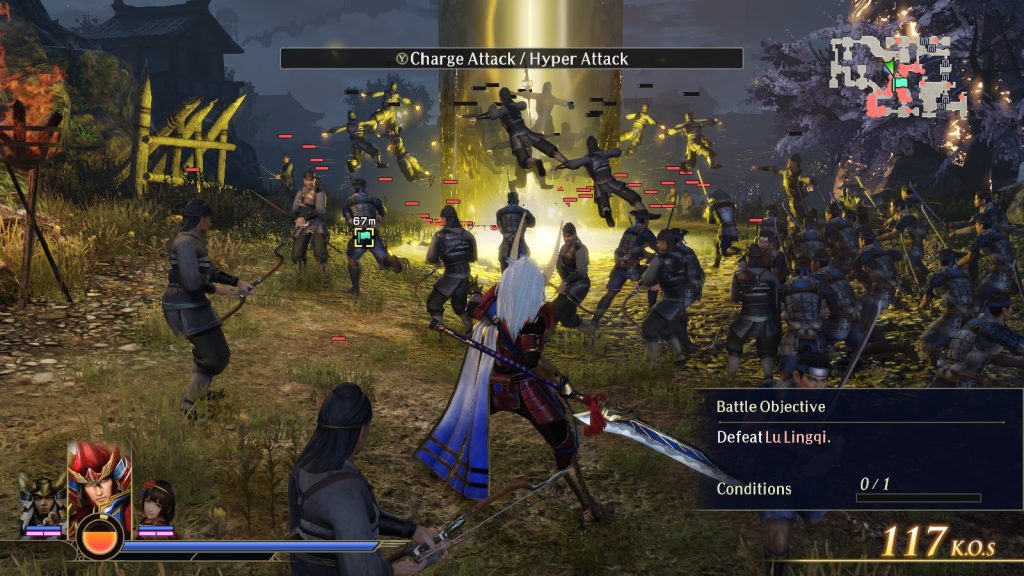
Magic and Deification the newest additions
New in Warriors Orochi 4 are the magic attacks. Unlike the Musou gauge, the magic gauge is constantly replenishing itself with light attacks depleting about 1/8th and strong attacks take the full amount. The heavy magic attacks do more damage depending on your current combo count and cuts it short, so it can take a bit of consideration on when to use it.
All characters have their own assigned magic attacks, though it’s not 100% individual and some characters share the same basic magic attacks. The magic attacks can be used close to anytime while you are attacking, making it a powerful tool. You’re not the only one with this new type of attack though, opponents can use them too. However, they take a little bit longer and you can intercept their casting with your own magic which results in a blast doing AoE damage. To make it a little bit more strategic, there are also “nails” spread across the stage where your magic gauge refills at a fast speed as long as you put it out with the R button and stay in its vicinity.
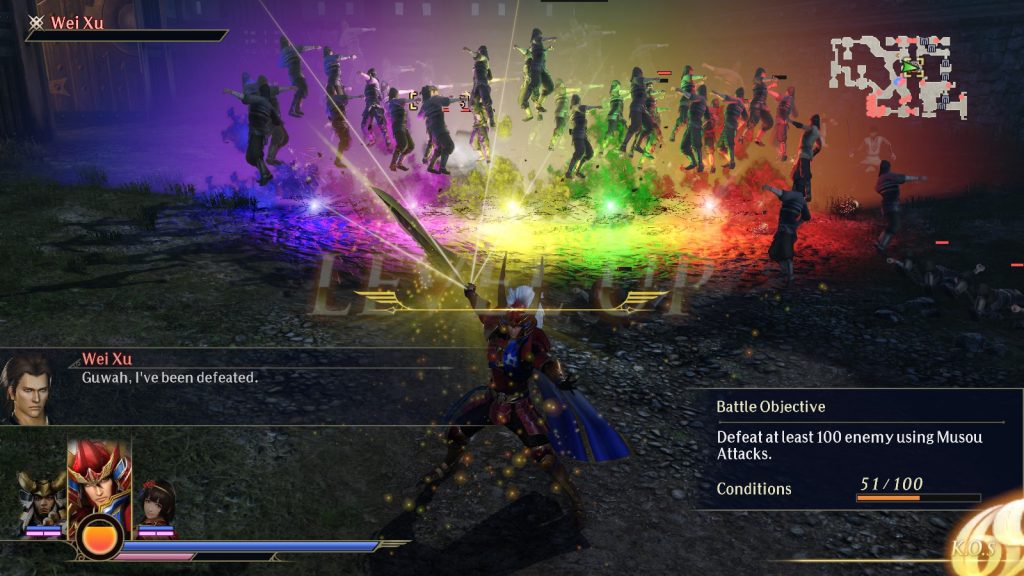
Unique Magic (NEW)
This requires a full Magic gauge and 1 bar of Musou to unleash a magic supported Musou attack. As with heavy magic attacks, the Unique Magic cuts of the combo get stronger at specific combo counts.
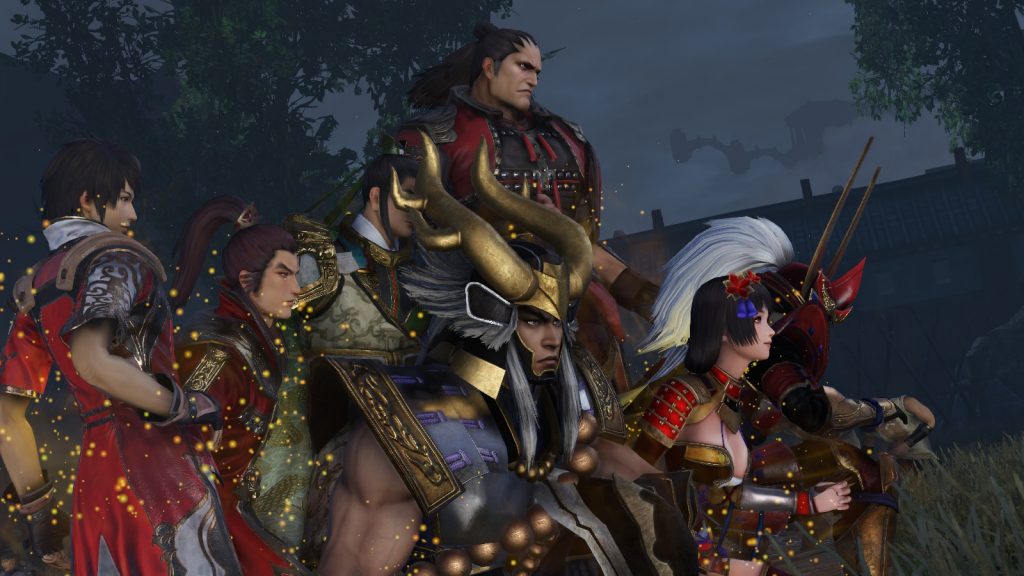
Unity Magic (NEW)
This fills up by defeating enemies with magic. When full, you can unleash an ultimate attack that utilizes all the characters in your team, including the four support characters. It has a sizeable blast range and turns defeated enemies into gems.
Deification (NEW)
Specific characters transform themselves into a new form that supplies them with infinite magic when activating Rage. The Deification has its own timer and is not tied to Rage outside of activation.
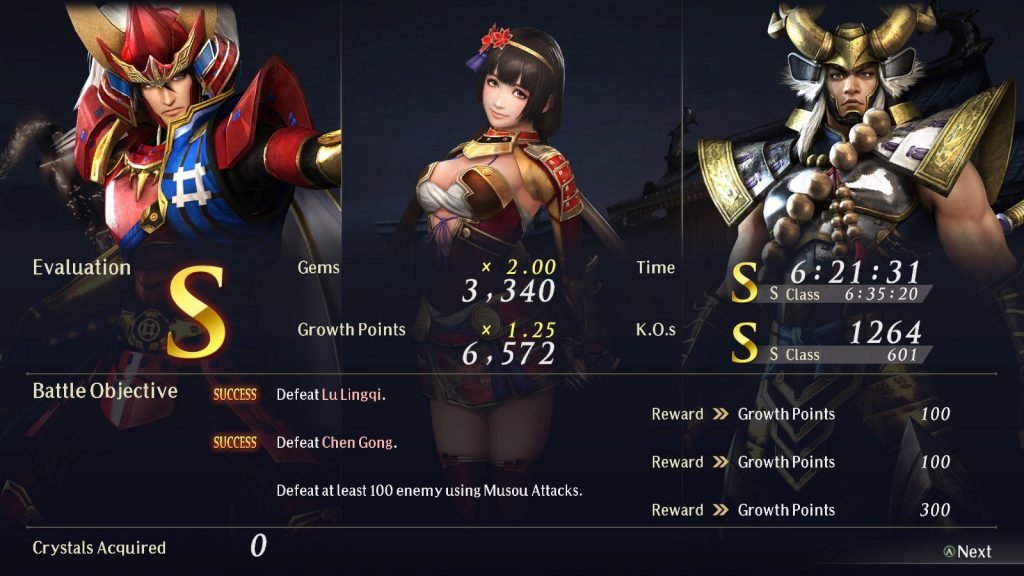
Post-battle results
Every mission also has their own grading for time and defeated enemies with a maximum of rank S. The higher the rank the higher the rewards multiplier. If you have gotten a lower rank, the requirement for the next rank will be shown under your current numbers. After that, you can take a look at your spoils of war consisting of weapons and attributes that can be used for weapon customization.
Gameplay Summary
The Orochi Warriors gameplay is present with a few changes, the biggest one being the magic. Just like its predecessor, the fighting is a lot more fluid by integrating magic and character swaps into your repertoire. It’s fun in a simple kind of way that requires time and resource management along with the fighting action. The difficulty slowly ramps up as you progress, to the point where it becomes rather impossible for the elite units to meet the level recommendation as level ups are getting more costly and the Growth Point gain cannot keep up. However, you can level up characters by sending them to training.
Looking at the fighting aspect, a personal gripe might be the new magic weapons as they do not feel balanced at all. Some feel really strong while others are worth a head scratch, this can limit the usability of the characters as it’s fixed for each of them. Occasionally, a special enemy called Hundun can appear at random in already finished missions and this comes with a newly fixed difficulty called Pandemonium. It’s extra difficult, your characters do not regenerate when they are tagged out and enemies around it are extra buffed up. The additional three challenges also get increasingly difficult which can result in a need to revisit past battles just to complete them for the extra rewards. Considering this, and being able to choose between difficulties, the huge amount of unlockable characters and story missions offer a quite a big large amount of playtime if you’re a completionist.
Graphics and Sound
At first glance, the graphics are of average quality. Considering that the game is based around fighting large amounts of enemies at once it becomes clear that it looks good for what it sets out to do. Musou attacks are quite nice to look at with the cinematic camera. Seeing your team of 7 line up when using Unity Magic is also a nice touch. Admittedly, even on the lowest settings on a Surface Pro 2, it looks quite good.
The music works great as background music and keeps the player pumped up and fits the game well enough, there are also recurring soundtracks from the older games such as “Dynasty Meets Samurai”. All story sections are fully voiced in Japanese adding a little bit more personality to the characters.
Verdict
Warriors Orochi 4 is a good sequel to Warriors Orochi 3, though it lacks guest characters. It still boasts a huge cast with each character having their own attacks. This shows it’s a game with a lot of content to play around. 100%ing the game will take quite some time considering the amount of content it offers with 100+ characters to play, though being able to send teams of three to train for a paltry amount of gems helps out quite a bit. For fans of the series, it’s a safe bet that doesn’t stray off the formula like Dynasty Warriors 9. Newcomers can look forward to a fully packed game that includes short summaries of the prior games, so everybody can enjoy its continuation of the story. Overall it’s a solid package that can be enjoyed in both Local and Online Co-op, with the latter having the before mentioned caveats. All things considered, it’s a clearly in the realms of Save, though people who dislike a repetitive gameplay loop might want to wait for a sale before jumping in and giving it a try.
Play Progress: At the time of this review, I am still continuing my playthrough. My current progress after at least 20-30 hours estimated at about 60% give or take, including side missions and excluding character relationships.

